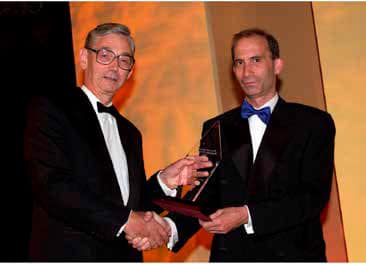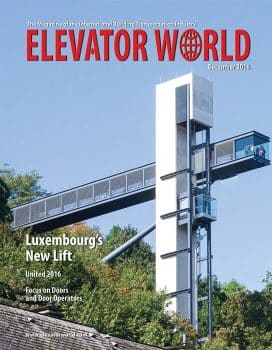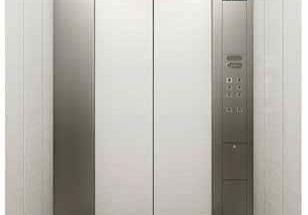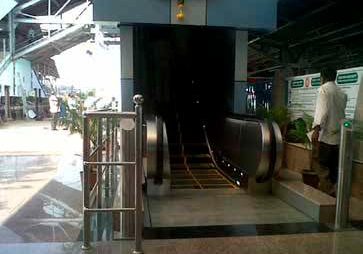Evolution of the Lift Engineering program at UoN
Following the introduction of the first edition of the European standard EN 81-1:1977 in 1977 (introduced in the U.K. as BS 5655-1:1979), the U.K. lift industry needed a wide ranging re-education of its workforce in both design and field service. The need to update the workforce was recognized by the then National Association of Lift Makers (NALM), now the Lift and Escalator Industry Association (LEIA). The association also recognized that, due to the wide geographic dispersion of potential students, distance learning was the best mechanism for delivery.[1,2]
Historical Developments
In 1982, a collaborative project between the then Nene College, now the University of Northampton (UoN), and NALM was launched to develop a distance-learning program that would provide modules (units) of study with the principle aims of updating the U.K. lift industry’s workforce on new standards and educating students in an ongoing program in specific areas of lift technology.[2]The first units became available in 1983, followed by regularly developed additional units. In this way, a comprehensive technical program covering all aspects of lift and escalator engineering (which reflected the changes and evolution of the European standard) was formed, attracting several hundred students per year. The current provision[3] not only covers the changes to the standard, but also the latest developments in lift technology, such as machine-room-less systems, rope technology and micro control systems.
The program led to the award of the Continuing Education Certificate in Lift Engineering. The program was later renamed the Professional Development Certificate (PDC)/Professional Diploma in Engineering and was accredited by the Business and Technology Education Council. Some parts of the program have been modified appropriately to reflect ASME A17.1 and incorporated into the Continuing Education and Training (CET®) program offered by the National Association of Elevator Contractors.
Following on from the success of the PDC course and, recognizing a need for a more advanced program, in 1998, UoN launched a distance-learning Master’s course in Lift Engineering.[4] The Master of Science (MSc) is a unique postgraduate academic provision that aims to provide a detailed, academic study of lift engineering and related management issues, together with a higher-level qualification for persons employed in lift making and allied industries.[5]
In 2003, the Foundation Degree in Lift Engineering (FdSc) was launched. It was followed by the Higher National Certificate (HNC) in Lift Engineering. Those two awards, also taught entirely by distance learning, provide educational underpinning for the lift-engineering technician career path (Figure 1). The path forms a bridge to the master’s and research degree programs. Students are also able to proceed to a general undergraduate degree (Bachelor of Science in Engineering).
Each course consists of a number of compulsory and elective modules, and the emphasis is on learning, rather than teaching. Academic tutors fulfill the role of facilitators of learning, and the acquisition of the skills of self learning is the primary aim of the entire provision.
Learning materials for all courses, available in electronic format from the Northampton Integrated Learning Environment (NILE) electronic-conferencing system, have been designed and are being continuously revised for use by distance-learning students. The materials were developed during the 33 years of UoN’s distance-learning provision.
NILE enables students to communicate with tutors and other students on the courses by posting and reading messages. Traditional classroom meetings and seminar facilities have also been used on request. The virtual environment helps minimize potential isolation of students and provides an opportunity for the tutors to supply additional learning and tutorial materials.
Underpinned by Research
The taught Lift Engineering provision is research informed and underpinned by R&D activities conducted provision at UoN. At the dissertation stage, MSc students are required to propose and justify a research topic as a subject for his or her dissertation. Research topics cover a broad range of areas and reflect both students’ interests and industry needs, demonstrating a strong relationship between practice and theory across a number of elevator technology areas. (For a review of the dissertation topics, see [6,7].)
The research program provides an opportunity for MSc graduates to continue their studies in pursuit of higher research degrees such as Doctor of Philosophy (PhD) and Master of Philosophy (MPhil). The program environment offers an opportunity for students to network with a variety of contacts through research seminars and conference events.
In 2012, UoN and thyssenkrupp Elevator established the Strategic Partnership for Cooperation in Research and Innovation. This partnership built upon a previous relationship between the two entities and formed a platform for developing long-term R&D plans. The results arising from this endeavor play an important role in bridging the gap between innovation, research and lift-engineering education.
Each academic year commences with the annual Symposium on Lift and Escalator Technologies,[8] organized in conjunction with the Chartered Institution of Building Services Engineers (CIBSE) Lifts Group and LEIA. This event provides opportunities for students, practitioners and scientists from industry and academia worldwide to network and discuss the latest training, education, research and innovation developments. The symposium is now in its sixth iteration.
Conclusion
The Lift Engineering program at UoN was developed to integrate three key elements: practice, learning and research. It forms a complete provision for lifelong learning, bridging the gap between those three elements.
The contributions made by a number of institutions and individuals deserve recognition. The university continues working closely with LEIA, and, over the last few years, its FDSc/HNC courses have been delivered jointly within the framework of the partnership with LEIA.
The support received has been very important for the success of the program and mutually beneficial, leading to increased research and innovation on both sides.
Instrumental to the development of the programs have been the support, advice and guidance of industry representatives who include Adrian Shiner (formerly of KONE), Michael Savage (formerly of Schindler) and Derek Smith (formerly of Otis). The support of current and former academic staff members at UoN in developing and running the program has been crucial. In particular, contributions made by Phil Andrew, former divisional leader for Engineering, who was named the Lift Industry Personality of the Year in 2002, should be acknowledged. Andrew led the Lift Technology team that developed the MSc and FDSc programs and mentored younger staff members and postgraduate students over a number of years.
It should also be acknowledged that the program has been operating successfully due to contributions from current industry-based visiting professors/fellows, some of whom are former master’s and PhD students who graduated from the program. They include: David Cooper (LECS UK), Dr. Benedikt Meier (thyssenkrupp), Nick Mellor (LEIA), Dr. Albert So (Asian Institute of Built Environment), Dr. Richard Peters (Peters Research Ltd.) and Dr. Rory Smith (thyssenkrupp).
References
[1] Andrew, J.P., Kaczmarczyk, S., “Systems Engineering of Elevators,” ELEVATOR WORLD, 2011.
[2] Adams, J.P., Andrew, J.P. and Kaczmarczyk, S., “Lift Technology by Distance Learning Comes of Age.” Editors: Moscinski, J. and Obracaj, D. Proceedings of the International Conference on Engineering Education (ICEE 2005), iNEER/Silesian University of Technology, 25–29 July 2005, Gliwice, Poland, p. 688-692.
[3] LEIA Distance Learning Online, 2016 (leia.co.uk/index.php?cid=29).
[4] Kaczmarczyk, S., Andrew, J.P., Adams, J.P., Postgraduate Programme in Lift Engineering at University College Northampton: Bridging the Gap between Practice, Learning and Research. Proceedings of the International Conference on Engineering Education (ICEE 2005), iNEER/Silesian University of Technology, July 25-29, 2005, Gliwice, Poland, p. 682-687.
[5] Kaczmarczyk, S., Andrew, J.P., Adams, J.P., Postgraduate and Research Programmes in Lift Engineering at The University of Northampton. Elevator Technology 16, Proceedings of ELEVCON 2006, June 20–22, 2006, Helsinki, Finland, p. 131-140.
[6] EW, “Vertical Transportation Technology Review Volume 1,” 2005.
[7] EW, “Vertical Transportation Technology Review Volume 2,” 2008.
[8] The University of Northampton/CIBSE Lifts Group/LEIA, Symposium on Lift and Escalator Technologies, 2016, (www.liftsymposium.org).
Get more of Elevator World. Sign up for our free e-newsletter.








